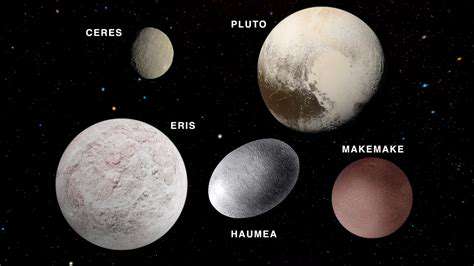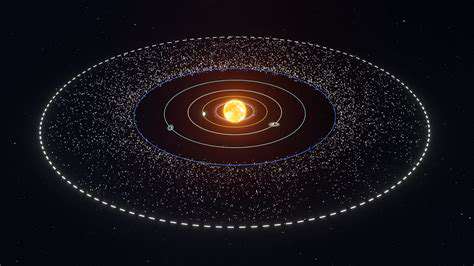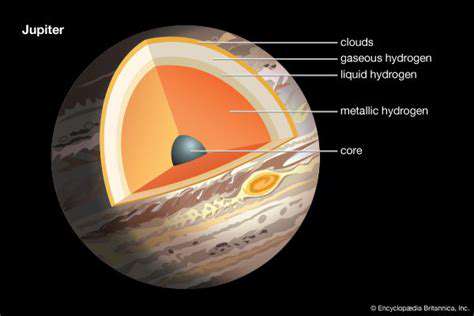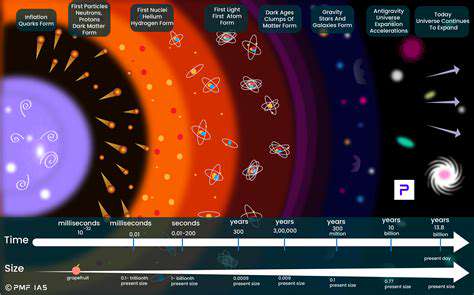
Pluto's Demoted Status
Pluto's reclassification as a dwarf planet in 2006 sparked considerable debate and discussion within the astronomical community. This controversial decision fundamentally altered our understanding of planetary classification and significantly impacted the way we categorize celestial bodies in our solar system. The International Astronomical Union (IAU) redefined the criteria for a full-fledged planet, and Pluto, despite its fascinating features and unique orbit, fell short of these new standards, leading to its demotion.
The key factor in Pluto's demotion was its inability to clear its orbital neighborhood of other celestial bodies. This means that Pluto shares its orbital space with numerous other objects, unlike the other planets which have largely cleared their respective zones of influence. This distinction highlights the dynamic nature of planetary formation and the complex interactions within our solar system.
Pluto's Intriguing Features and Characteristics
Despite its demotion, Pluto remains a fascinating subject of study. Pluto boasts a unique icy surface, showcasing diverse geological features that continue to intrigue scientists. Its complex atmosphere, composed primarily of nitrogen, methane, and carbon monoxide, shifts and changes depending on its proximity to the Sun. This dynamic nature is a key element in understanding Pluto's unique environment.
Furthermore, Pluto's moon system is notable for its size and composition. Charon, Pluto's largest moon, is remarkably large relative to Pluto itself, leading to a unique two-body system. This characteristic sets it apart from the other planets in our solar system and underscores the complexities and diverse forms of planetary systems in the cosmos. Observations continue to reveal further intricacies about the composition of these moons.
Exploring Pluto's Potential
The New Horizons mission, a groundbreaking space exploration endeavor, provided unprecedented close-up views of Pluto. These images and data have revolutionized our understanding of this distant dwarf planet, offering a wealth of information about its surface, atmosphere, and potential for harboring a subsurface ocean. Further exploration and research are likely to uncover more surprising discoveries about the intriguing characteristics of this intriguing world.
The possibility of discovering evidence of past or present life forms, however unlikely, adds another compelling reason to continue exploring Pluto. Given the possibility of geological activity and the presence of potential subsurface oceans, the dwarf planet certainly warrants further investigation. This research could offer crucial insights into the potential for life beyond Earth, expanding our understanding of the universe.
Adopting a vegan lifestyle is a personal journey of growth and self-discovery. It's about challenging preconceptions, learning new skills, and expanding your understanding of the world around you. This journey can be empowering, fostering a deeper connection to ethical values and environmental awareness.
Unforeseen Discoveries and Future Prospects
Unexpected Geological Diversity
The New Horizons mission, while primarily focused on Pluto, yielded a surprising array of geological features beyond our initial expectations. The discovery of vast, nitrogen-ice plains contrasted sharply with the rugged, mountainous terrain observed. These findings suggest a level of dynamic geological activity that wasn't anticipated, challenging our understanding of how such icy bodies evolve and interact with their surroundings. The mission's data is pushing scientists to re-evaluate models of planetary formation and evolution in the outer solar system.
Cryovolcanism and the Interior of Pluto
Observations of cryovolcanoes, vents that erupt icy materials instead of molten rock, were a significant discovery. These features, along with the presence of possible subsurface oceans, indicate a surprisingly active interior for Pluto. Understanding the processes driving this cryovolcanism will be crucial in unraveling the internal structure and thermal history of Pluto. The presence of subsurface oceans raises intriguing possibilities about the potential for harboring life, though further investigation is needed.
Charon's Complex Surface and Binary Interactions
Charon, Pluto's largest moon, presented a complex surface with evidence of past tectonic activity. The interaction between Pluto and Charon is not just a simple orbital dance; rather, it's a dynamic interplay that has shaped the evolution of both bodies. Understanding the forces at play in this binary system provides valuable insights into the formation and evolution of other binary planetary systems in our solar system and beyond.
The Kuiper Belt's Composition and Structure
Beyond Pluto, the New Horizons mission provided crucial data about the Kuiper Belt, a vast region of icy bodies beyond Neptune. The mission's flyby of Ultima Thule, a small object in the Kuiper Belt, allowed scientists to study the composition and structure of these distant bodies. This data challenges existing models of Kuiper Belt object formation and highlights the diversity of objects in this region. The mission's encounter with Ultima Thule gave us unprecedented insights into the early solar system.
Future Missions and Enhanced Understanding
The New Horizons mission has paved the way for future missions to explore the outer solar system in greater detail. The data collected will inform the design and implementation of future probes, enabling us to delve deeper into the mysteries of Pluto and the Kuiper Belt. With the wealth of new data, we are poised to refine our understanding of planetary formation and the conditions that may have led to the emergence of life in the outer solar system. The future of space exploration is now inextricably linked to the insights gleaned from the New Horizons mission.
The Importance of Exploration and Discovery
The New Horizons mission exemplifies the importance of continued exploration in our solar system and beyond. The unforeseen discoveries have reshaped our understanding of planetary evolution and the diversity of objects in the outer solar system. These findings underscore the value of venturing into the unknown, pushing the boundaries of scientific knowledge, and inspiring future generations of scientists and explorers. The quest for understanding our place in the cosmos continues with every new discovery and every new mission.
Beyond the Kuiper Belt: Expanding the Horizons of Exploration

Exploring the Uncharted Regions
The Kuiper Belt, a region of icy bodies beyond Neptune, has long captivated astronomers. However, the vast expanse of space beyond even this distant realm holds untold mysteries. Scientists are increasingly focused on understanding the populations of objects and the dynamics that shape them in this unexplored territory. This region represents a potential treasure trove of information about the early solar system, offering clues about its formation and evolution.
The journey beyond the Kuiper Belt promises to unlock secrets about the fundamental processes that govern planetary formation. Astronomers are seeking to understand the prevalence of icy bodies, the distribution of different types of materials, and how these factors influence the overall structure of the outer solar system. By studying these unexplored regions, we gain a more comprehensive understanding of our own solar system's development.
The Role of Trans-Neptunian Objects
Trans-Neptunian objects (TNOs) are a crucial element in this exploration. These icy bodies, ranging from small icy rocks to dwarf planets, populate the region beyond Neptune. Studying their composition, orbits, and interactions provides valuable insights into the conditions present during the solar system's formation. Understanding their distribution and characteristics is essential to unravel the mysteries of the outer solar system.
Observational data from telescopes and space missions are crucial for characterizing these distant objects. Further research is needed to determine the extent and diversity of TNO populations, including their sizes, compositions, and orbital inclinations. This detailed analysis will help to solidify our understanding of the early solar system and the processes that shaped its evolution.
The Search for Extraterrestrial Life
The quest for extraterrestrial life is intrinsically linked to the exploration of the outer reaches of our solar system. While the possibility of life on icy moons within the Kuiper Belt or beyond remains a topic of intense debate, the presence of organic molecules and water ice in these distant regions suggests the possibility of past or present habitable environments. Such environments warrant further investigation.
The potential for habitable zones beyond the Kuiper Belt demands careful consideration of the conditions necessary for life to thrive. Understanding the chemical composition of distant objects and the presence of liquid water, even in subsurface oceans, is crucial. Further exploration of these regions is essential for the future of astrobiology, and the search for life beyond Earth.











